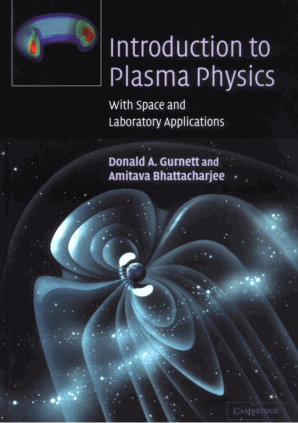|
Welcome to the APPH E6101x class information site.
This is the first semester of a two-semester sequence in plasma physics. Plasma physics is the study of "luminous matter", matter that has been heated sufficiently or prepared specially in order to be ionized. In plasma long-range electromagnetic forces are much more important than short range forces. Plasma dynamics is often dominated by "collective" motion involving the correlated motion of large populations of neighboring particles. Since plasma motion generates electric and magnetic fields, plasma behavior exhibits sometimes very beautiful nonlinear physics.
Plasma is studied in the laboratory and in space. Most of the visible universe is in the plasma state. Laboratory generated plasma are used to studied the fundamental properties of high-temperature matter, and they are employed for many valuable applications like surface processing and lighting. Integrated circuits are manufactured using plasma processing, and plasma displays are status symbols of today's world of entertainment. Controlled fusion energy research reflects the remarkable success of plasma physics. The controlled release of more than 10 MW of fusion power has occurred within the strong confining fields of tokamak devices, and the world is now building the first experimental fusion power source, called ITER.
Topics covered include: Motion of charged particles in space- and time-varying electromagnetic fields. Kinetic description of plasmas. Collisional Boltzmann equation (and collision operators in Fokker-Planck forms.) Classical transport equations and collisional relaxation processes. Linear electrostatic and electromagnetic waves in field-free plasmas. Vlasov equation and Landau damping.
APPH 6101 requires a prior experience with electromagnetics (and some electrodynamics) and partial differential equations. The formal prerequisites are APPH E3300y Applied Electromagnetism and APMA E3102y Applied Mathematics II: Partial Differential Equations. The goal of this course is to provide a solid understanding of both the fundamental aspects of plasma physics and introduce students to research problems in the fields of laboratory and space plasma physics.
|
